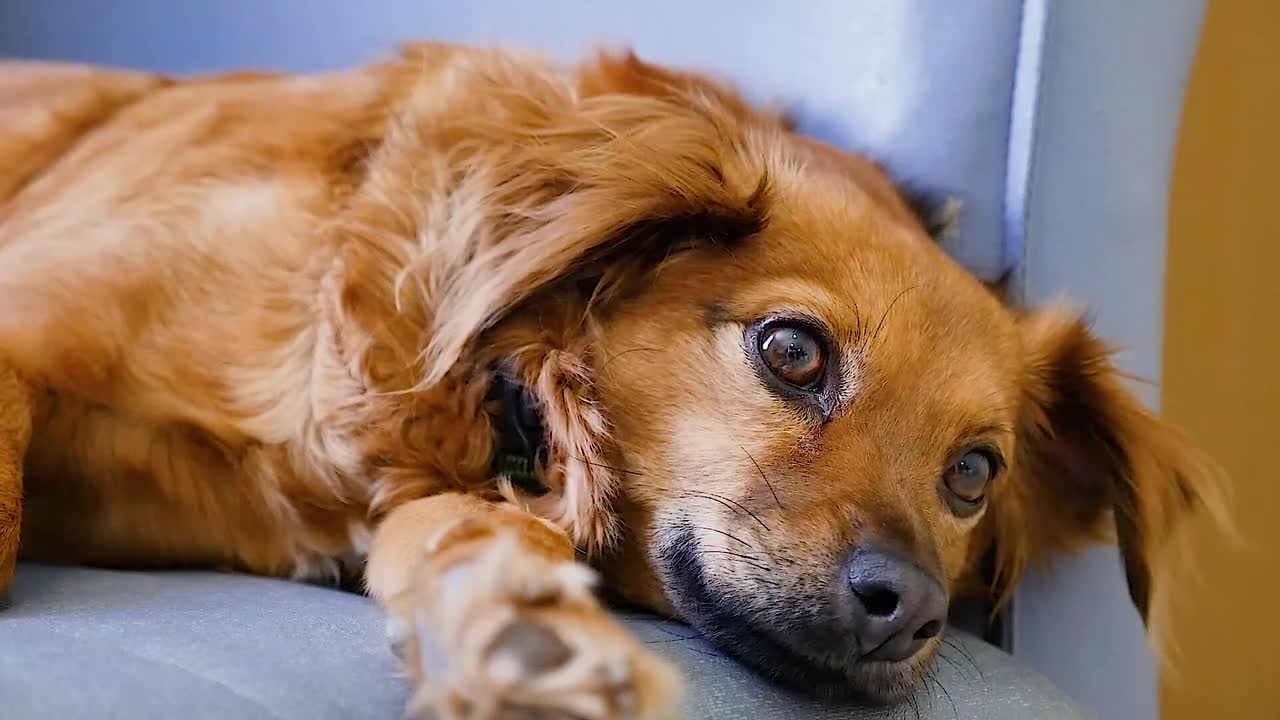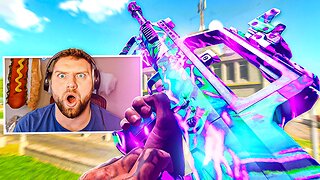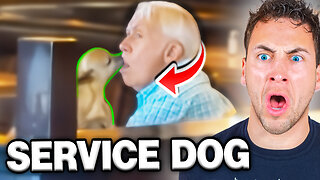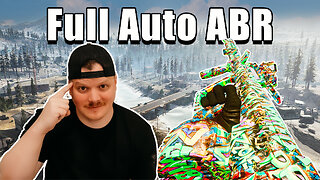Premium Only Content

Are You Choosing and Using Treats Correctly?
Beware the power of the treat! When coupled with a treat, behaviors will likely intensify or become more frequent whether it’s intentional or not.
Say your dog knocks over the garbage can and eats a pork chop bone and a butter wrapper. You pay a costly emergency visit to the veterinarian and clean up the kitchen. You learn that your dog is going to be fine physically, but you still have a problem—you come home from work the next day to find your kitchen festooned in trash. So you resort to putting the garbage can on the counter before you leave. But upon your return you find garbage trailing from the kitchen to the front door. You’ve now created a problem, because your dog has been rewarded multiple times for an unwanted behavior, making it harder for you to eradicate.
This tale of woe illustrates well what can happen when a dog self-rewards—think about how many times a gambler will play a slot machine to get to the jackpot. But you can use the power of the treat to your advantage.
Choosing a Treat
Using a portion of your dog’s regular dinner as a treat is easiest because you can simply deduct that amount from his daily allotment and not risk providing him with too many or too few calories. But if you are using special treats in a training program, his regular old chow may not be exciting enough for training purposes.
It depends on the dog. If yours is among the fussier class, try a meat-based or jerky-style treat, perhaps in a beef or salmon flavor. Most dogs find this enticing. Experiment until you find a treat that your dog is eager to work for, and reserve it for training sessions only.
The other type of treat you might want to have on hand is something that will occupy your dog while you are away. This might be a hard chew, a toy you can stuff with food, or some small dry treats scattered around the room as a treasure hunt.
However, if your dog suffers from separation anxiety, this is unlikely to help. He probably won’t show any interest in food until you return. The only thing you can do is try to avoid leaving him alone and work on gradually desensitizing him to your absence.
Using Treats by Themselves
Remember, any behavior that is paired with a treat is likely to increase in frequency or intensity. You can use this to teach your dog the commands you want him to know, like sit, down, or come. So let’s choose two behaviors most dog owners would like to have: the sit and the recall. Each benefits from a different style of training, the sit being almost stationary and the recall requiring an audible marker so you can reward the appropriate behavior from a distance.
The sit is super easy to teach with treats. Hold a treat between your fingers and move it back over your dog’s head. When the dog starts to fold into a sit, give him the treat. If he jumps up instead of sitting, you’re holding the treat too high, and if he’s already up and moving when you deliver the treat, you’re holding on to it for too long. Good timing is important—you’ll get more of the behavior you want to reward.
Assess your training program as you go. If sit is the only behavior you’re working on, your dog’s response should be getting faster. But the sit won’t develop into anything useful unless you work toward extending its duration. What you really want is a dog who does a sit/stay, not just a sit. Fortunately, the procedure is simple: Just delay giving him the treat. If the behavior falls apart, you’re asking him to do too much at a time. Go back to rewarding immediately, and once in a while, wait a half-second. The sit should withstand this, and you can gradually lengthen the delay.
But now a new problem arises. You need to be able to tell your dog when the behavior is finished. Choose a word that will mean “we’re done here; you can do what you want now.” This will apply to all behaviors. I use the word “release” because it doesn’t tend to come up in conversation and it’s easy for me to remember.
So your training session now looks like this: You use a treat to lure your dog into a sit, give him the treat, say your release word, and ignore him for a second. Eager to earn more treats, the dog stays engaged and snaps into a sit. You delay a half-second and follow it immediately with another treat. After another delay, you give him a third treat and then say your release word. You can do a dozen repetitions or so, making sure to include a couple of quick and easy sits to keep things unpredictable.
Right about now I can hear you asking, “When can I say sit?” Or maybe you’ve been saying it all along (not a good idea). Adding a verbal cue is actually a technical part of training on which another article can be written entirely.
Using Treats With a Marker
The recall is perfect for teaching with a marker, which is a positive signal you can give your dog from a distance, along with treats. You want to let him know with the marker that running toward you is a desired behavior, and then let him know that actually arriving is the final, rewardable behavior.
You need to choose the marker you will use. It could be a clicker, another device, or a new word that will henceforth mean “I like what you’re doing and it will be rewarded.” The word should never mean anything else.
The training sequence for the recall is slightly different than the sit. First, make yourself the most interesting thing in the room so the odds are good that your dog will come to you. Once he is moving toward you, use your marker. When he gets to you, use the treat to get him to stop and stay. The recall isn’t much use if your dog runs past you. You want to be able to attach a leash and gain control when he arrives. So give him the treat, attach the leash, and interact with him for a couple of seconds. Then detach the leash, use the release word, and let him wander away.
In this case, your barriers are not duration but distance and distractions. If you think your dog is out of control and you choose to train him on leash, the hardest step will be losing the leash. I believe that no matter what you try—long lines, ultra-light lines, grab tabs—your dog will likely know the difference between being free and being attached, so the recall may not work when you really need it. Try training him indoors without his leash first.
Distractions will also be a big bear to get past. You’ll need all your patience to move as slowly as possible through a list of gradually increasing distractions. Use your marker to keep the dog engaged with you. Do not run toward the dog no matter how much you may want to—you’ll only push him away. Chasing is a favorite game among dogs, and he’ll keep playing this game with you as long as he can.
Training a reliable recall will teach you pretty much everything you need to know about using treats and markers. If you run into problems, gather your patience, slow down, and back up a step before moving forward. Control environmental challenges for as long as you can. Having squirrels running by when you first start recall training will make progress difficult.
Cheryl S. Smith was an award-winning canine behavior & training expert, columnist, editor, and lecturer. Cheryl passed away in July 2016. She authored ten dog-care books, published more than 60 articles for renowned journals, magazines, and organizations, and received several awards for exemplary writing from the Dog Writers Association of America.
-
 LIVE
LIVE
JuicyJohns
2 hours ago $0.01 earned🟢#1 REBIRTH PLAYER 10.2+ KD🟢
168 watching -
 LIVE
LIVE
GritsGG
3 hours agoWin Streaking! Most Wins 3390+ 🧠
51 watching -
 LIVE
LIVE
LFA TV
4 hours agoLFA TV ALL DAY STREAM - THURSDAY 8/21/25
5,169 watching -
 LIVE
LIVE
bstrui
2 hours agoStar Wars Jedi: Fallen Order and maybe a switch up later
72 watching -
 4:00:19
4:00:19
The Bubba Army
1 day agoAnother LopSided Jake Paul Fight? - Bubba the Love Sponge® Show | 8/21/25
99.2K3 -
 1:02:42
1:02:42
Dialogue works
1 day ago $4.46 earnedJohn Helmer: Trump Ditches Ceasefire? Despite EU & Zelensky Pressure
81.6K23 -
 10:48
10:48
Nikko Ortiz
22 hours agoDont Watch These TikToks
103K15 -
 10:17
10:17
MattMorseTV
21 hours ago $16.71 earnedTrump's DOJ just DROPPED a NUKE.
111K111 -
 2:09:32
2:09:32
Side Scrollers Podcast
1 day agoStreamer DIES Live On Air + Your Food is Poison + Xbox Announces $900 Handheld | Side Scrollers Live
57.8K21 -
 15:32
15:32
GritsGG
20 hours agoFull Auto ABR Sniper Support! Most Winning Quad Win Streaking!
40.8K4